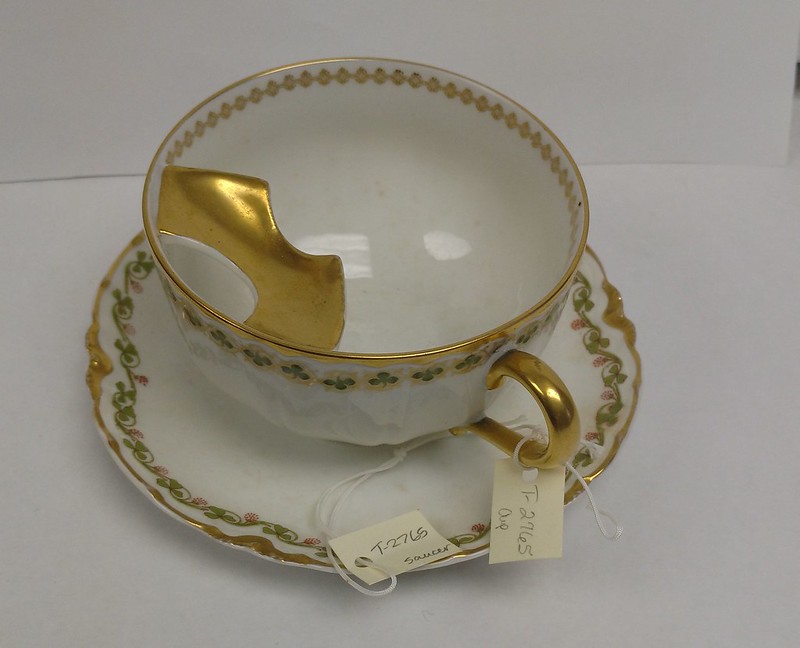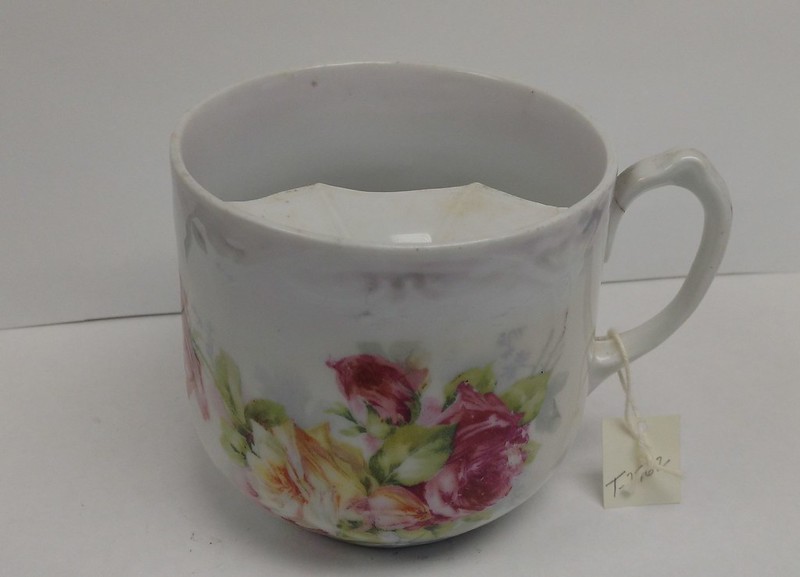Read Our Blogs
We Mustache You a Question...
How many mustaches can you find in this 1890s photo of a tennis party at the Big Stone Gap home of author John Fox, Jr.?

Welcome back to the Southwest Virginia Museum Historical State Park's series of virtual exhibits! Today we're exploring a small part of our ceramic collection, which includes everything from Southwestern Virginia pottery to china used by Queen Victoria's prime minister.
We're focusing on an item that is practical, yet a little odd. The moustache (mustache) cup was a Victorian invention, thought to be invented by Englishman Harvey Adams in the mid-1800s. Perhaps inspired by Queen Victoria's beloved husband Albert, the full mustache became very popular from around 1860 into the early 1900s.
But there was a problem for these fashionable men--not only did their elaborate facial hair get sopping wet while drinking tea, they also risked melting the styling wax and hair dyes used to style their mustaches--hence, the delicate insert, or ledge, in the cup. These mustache cups became very popular in the latter part of the 19th century, as every Victorian male sported a mustache.
Potteries world-wide produced their own variants, and today they can be commonly found on antique collecting and online sales sites. Here at the museum, we have five in our collection, ranging from the plain to the very fancy.


This ornate cup and saucer are Limoges porcelain, manufactured by the American importer of French porcelain, Haviland & Company. The pattern is known as the Clover Leaf, and the maker's mark on the bottom of the cup dates it to the first quarter of the 20th century.


Another elegant cup and saucer set in our collection is this one, also of Limoges porcelain. The stamp on the bottom of this cup dates it to the 1880s (CFH is Charles Field Haviland, and GDM is Gerard, Dufraisseix and Morelis). The hand-painted pink with blue flowers, plus the intricate gold leaf monogram, makes this set one of the most elegant in our collection. It's not too difficult to imagine a proper Victorian gentleman at home enjoying afternoon tea in this cup, keeping his handsome handlebar mustache safe from stains.


This German lustreware cup was evidently intended as a gift for someone, because it has the word "Present” in raised gold relief letters, adorned with green and white flowers. It wasn't unusual to designate a mustache cup in this way, and you can find ones with "Papa," "Brother," and other sentiments. This one dates from around 1900 and was donated to the museum in 1956.


Less ornate but still attractive are these two floral cups with scalloped handles; it's evident from the worn and faded gilding and colors that these were in heavy use.
The cups in our collection are all intended for right-handed people. There were ones made for left-handers--you can find them on-line--but it was also possible to purchase a portable mustache guard that would fit into your own cup and travel with you. Mustache cups aren't just in history museums, though. They're still being made, so keep one in mind for that hirsute father, husband or brother who has everything!
If you have read the article and have a question, please email nancy.heltman@dcr.virginia.gov.
Search for blogs
By Park
Categories
Cabins
Camping
Fishing
History and Culture
Other
Programs and Events
Trails
Volunteers
Water Fun
Archive
2025
2024
2023
2022
2021
2020
2019
2018
2017
2016
2015
2014
2012













